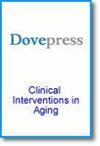Comparison of the Clinical Outcomes Between Reperfusion and Non-Reperfusion Therapy in Elderly Patients with Acute Ischemic Stroke
IF 3.7
3区 医学
引用次数: 0
Abstract
Purpose: To investigate the benefit (90-day mRS score) and rate of major complications (early symptomatic intracranial hemorrhage-SICH) after reperfusion therapy (RT) (including intravenous thrombolysis -IVT and mechanical thrombectomy -MT) in patients over 80 years with acute ischemic stroke (AIS).Patients and Methods: AIS patients aged over 80 admitted to Huizhou Central People’s Hospital from September 2018 to 2023 were included in this study. Data on SICH, NIHSS, and mRS were analyzed. A good prognosis was defined as a mRS ≤ 2 or recovery to pre-stroke status at 90 days.
Results: Of 209 patients, 80 received non-RT, 100 received IVT and 29 underwent MT. The non-RT group had the lowest baseline NIHSS while the MT group had the highest (non-RT 6.0 vs IVT 12.0 vs MT 18.0, P < 0.001). Higher NIHSS was associated with increased SICH risk (OR 1.083, P=0.032), while RT was not (OR 5.194, P=0.129). The overall SICH rate in the RT group was higher but not significantly different after stratification by stroke severity. Poor prognosis was associated with higher admission NIHSS, stroke due to large artery atherosclerosis (LAA) combined with cardioembolism (CE), and stroke-associated pneumonia (SAP) (OR 0.902, P< 0.001; OR 0.297, P=0.029; OR 0.103, P< 0.001, respectively). The RT group showed a greater reduction in NIHSS (delta NIHSS) than the non-RT group (non-RT 2.0 vs IVT 4.0 vs MT 6.0, P< 0.005). For severe AIS, the IVT group had a better prognosis at 90 days (non-RT 0% vs IVT 38.2%, P=0.039). No 90-day mortality difference was found between groups after stratification.
Conclusion: Stroke severity, rather than RT, is an independent risk factor for SICH in AIS patients over 80. RT in severe stroke patients improves NIHSS at 90 days, suggesting RT is safe and effective in this demographic. Further studies with larger samples are required to confirm these findings.
Keywords: acute ischemic stroke, elderly, intravenous thrombolysis, mechanical thrombectomy, symptomatic intracranial hemorrhage, therapeutic efficacy
老年急性缺血性脑卒中患者再灌注疗法与非再灌注疗法的临床疗效比较
目的:探讨80岁以上急性缺血性脑卒中(AIS)患者接受再灌注治疗(RT)(包括静脉溶栓-IVT和机械取栓-MT)后的获益(90天mRS评分)和主要并发症(早期症状性颅内出血-SICH)发生率:本研究纳入2018年9月至2023年惠州市中心人民医院收治的80岁以上AIS患者。分析SICH、NIHSS和mRS数据。mRS≤2或90天后恢复至卒中前状态为预后良好:在209名患者中,80人接受了非RT治疗,100人接受了IVT治疗,29人接受了MT治疗。非 RT 组的基线 NIHSS 最低,而 MT 组最高(非 RT 6.0 vs IVT 12.0 vs MT 18.0,P < 0.001)。较高的 NIHSS 与 SICH 风险增加有关(OR 1.083,P=0.032),而 RT 与之无关(OR 5.194,P=0.129)。根据卒中严重程度分层后,RT 组的总体 SICH 发生率更高,但无显著差异。预后较差与入院 NIHSS 较高、大动脉粥样硬化(LAA)导致的卒中合并心脑血管栓塞(CE)和卒中相关肺炎(SAP)有关(OR 0.902,P< 0.001;OR 0.297,P=0.029;OR 0.103,P< 0.001)。与非 RT 组相比,RT 组的 NIHSS(δ NIHSS)下降幅度更大(非 RT 2.0 vs IVT 4.0 vs MT 6.0,P< 0.005)。对于重度 AIS,IVT 组 90 天的预后更好(非 IVT 组 0% vs IVT 组 38.2%,P=0.039)。分层后,各组间的90天死亡率无差异:结论:卒中严重程度而非 RT 是 80 岁以上 AIS 患者发生 SICH 的独立危险因素。严重卒中患者的 RT 可改善 90 天后的 NIHSS,这表明 RT 对这一人群是安全有效的。关键词:急性缺血性卒中、老年人、静脉溶栓、机械取栓、症状性颅内出血、疗效
本文章由计算机程序翻译,如有差异,请以英文原文为准。
求助全文
约1分钟内获得全文
求助全文
来源期刊

Clinical Interventions in Aging
GERIATRICS & GERONTOLOGY-
CiteScore
6.20
自引率
2.80%
发文量
193
期刊介绍:
Clinical Interventions in Aging, is an online, peer reviewed, open access journal focusing on concise rapid reporting of original research and reviews in aging. Special attention will be given to papers reporting on actual or potential clinical applications leading to improved prevention or treatment of disease or a greater understanding of pathological processes that result from maladaptive changes in the body associated with aging. This journal is directed at a wide array of scientists, engineers, pharmacists, pharmacologists and clinical specialists wishing to maintain an up to date knowledge of this exciting and emerging field.
 求助内容:
求助内容: 应助结果提醒方式:
应助结果提醒方式:


